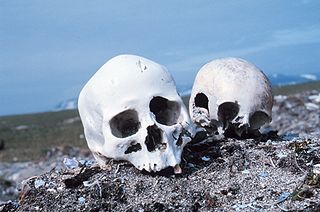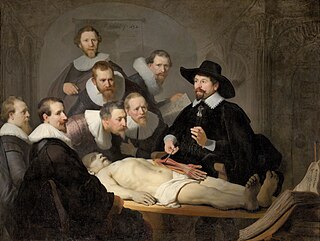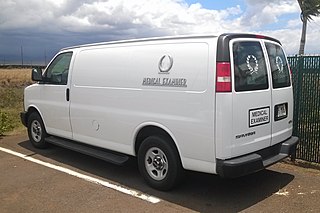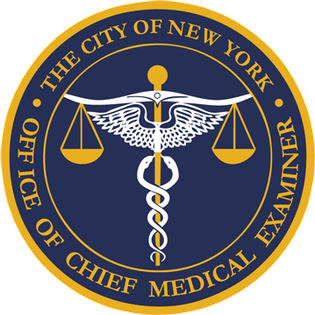
Forensic science, also known as criminalistics, is the application of science to criminal and civil laws, mainly—on the criminal side—during criminal investigation, as governed by the legal standards of admissible evidence and criminal procedure.

Forensic pathology is pathology that focuses on determining the cause of death by examining a corpse. A post mortem examination is performed by a medical examiner or forensic pathologist, usually during the investigation of criminal law cases and civil law cases in some jurisdictions. Coroners and medical examiners are also frequently asked to confirm the identity of a corpse.

An autopsy is a surgical procedure that consists of a thorough examination of a corpse by dissection to determine the cause, mode, and manner of death or to evaluate any disease or injury that may be present for research or educational purposes.. Autopsies are usually performed by a specialized medical doctor called a pathologist. In most cases, a medical examiner or coroner can determine cause of death and only a small portion of deaths require an autopsy.

Frances Glessner Lee was an American forensic scientist. She was influential in developing the science of forensics in the United States. To this end, she created the Nutshell Studies of Unexplained Death, 20 true crime scene dioramas recreated in minute detail at dollhouse scale, used for training homicide investigators. Eighteen of the Nutshell Studies of Unexplained Death are still in use for teaching purposes by the Maryland Office of the Chief Medical Examiner, and the dioramas are also now considered works of art. Glessner Lee also helped to establish the Department of Legal Medicine at Harvard, and endowed the Magrath Library of Legal Medicine there. She became the first female police captain in the United States, and is known as the "mother of forensic science".

Dissection is the dismembering of the body of a deceased animal or plant to study its anatomical structure. Autopsy is used in pathology and forensic medicine to determine the cause of death in humans. Less extensive dissection of plants and smaller animals preserved in a formaldehyde solution is typically carried out or demonstrated in biology and natural science classes in middle school and high school, while extensive dissections of cadavers of adults and children, both fresh and preserved are carried out by medical students in medical schools as a part of the teaching in subjects such as anatomy, pathology and forensic medicine. Consequently, dissection is typically conducted in a morgue or in an anatomy lab.
A body farm is a research facility where decomposition can be studied in a variety of settings. The initial one was conceived by anthropologist William M. Bass in 1987 at the University of Tennessee in Knoxville, Tennessee, where Bass was interested in studying the decomposition of a human corpse from the time of death to the time of decay. The aim was to gain a better understanding of the decomposition process, permitting the development of techniques for extracting information such as the timing and circumstances of death from human remains. Body farm research is of particular interest in forensic anthropology and related disciplines, and has applications in the fields of law enforcement and forensic science. By placing the bodies outside to face the elements, researchers are able to get a better understanding of the decomposition process.

The medical examiner is an appointed official in some American jurisdictions who is trained in pathology that investigates deaths that occur under unusual or suspicious circumstances, to perform post-mortem examinations, and in some jurisdictions to initiate inquests.

A diener is a morgue worker responsible for handling, moving, and cleaning the corpse. Dieners are also referred to as "morgue attendants", "autopsy technicians". The word is derived from the German word Leichendiener, which literally means corpse servant.

Lisa McPherson was an American member of the Church of Scientology who died of a pulmonary embolism while under the care of the Church's Flag Service Organization (FSO) in Clearwater, Florida. Following the report by the state medical examiner that indicated that McPherson was a victim of negligent homicide, Scientology was indicted on two felony charges, "abuse and/or neglect of a disabled adult" and "practicing medicine without a license." The charges against Scientology were dropped after the state's medical examiner changed the cause of death from "undetermined" to an "accident" on June 13, 2000. A civil suit brought by McPherson's family against the Church was settled on May 28, 2004.
Michael M. Baden is an American physician and board-certified forensic pathologist known for his work investigating high-profile deaths and as the host of HBO's Autopsy. Baden was the chief medical examiner of the City of New York from 1978 to 1979. He was also chairman of the House Select Committee on Assassinations' Forensic Pathology Panel that investigated the assassination of John F. Kennedy. Baden's independent autopsy findings are often in conflict with the local authorities' opinions.

Thomas Tsunetomi Noguchi is the former Chief Medical Examiner-Coroner for the County of Los Angeles. He resigned from the office, under pressure, in 1968 over inappropriate comments he was alleged to have made, but was restored soon after. He was forced out a second time, in 1982, over allegations of mismanagement. He later worked at the University of Southern California and served as president of the American National Association of Medical Examiners.
"Autopsy" is a television series of HBO's America Undercover documentary series. Dr. Michael Baden, a real-life forensic pathologist, is the primary analyst, and has been personally involved in many of the cases that are reviewed.
The autopsy of president John Fitzgerald Kennedy was performed at the Bethesda Naval Hospital in Bethesda, Maryland. The autopsy began at about 8 p.m. EST November 22, 1963 and ended at about 12:30 a.m. EST November 23, 1963. The choice of autopsy hospital in the Washington, D.C. area was made by his widow, Jacqueline Kennedy. She chose the Bethesda Naval Hospital because President Kennedy had been a naval officer.
Jan Carla Garavaglia, M.D, better known as "Dr. G", served as the Chief Medical Examiner for Orange and Osceola counties in Orlando, Florida from 2004 until her retirement in May 2015. She starred in the hit series Dr. G: Medical Examiner on the Discovery Health Channel which first aired in July 2004 and ran until 2012. Repeats of the show are aired on the Discovery Life Channel and Justice Network. The show is ranked No. 1 for Discovery Health and is also broadcast in Australia, Europe, South America and South Africa. Garavaglia has appeared on The Oprah Winfrey Show, Larry King Live, The Rachael Ray Show, The Doctors and The Dr. Oz Show.

Cedric Keith Simpson was an English forensic pathologist. He was Professor of Forensic Medicine in the University of London at Guy's Hospital, Lecturer in Forensic Medicine at the University of Oxford and a founding member and President of the Association of Forensic Medicine. Simpson became renowned for his post-mortems on high-profile murder cases, including the 1949 Acid Bath Murders committed by John George Haigh and the murder of gangster George Cornell, who was shot dead by Ronnie Kray in 1966.

The Office of Chief Medical Examiner of the City of New York (OCME) is a department within the city government that investigates cases of persons who die within New York City from criminal violence; by casualty or by suicide; suddenly, when in apparent good health; when unattended by a physician; in a correctional facility; or in any suspicious or unusual manner. The OCME also investigates when an application is made pursuant to law for a permit to cremate the body of a deceased person.
Gloria Ramirez was a woman from Riverside, California who was dubbed "the Toxic Lady" or "the Toxic Woman" by the media when several hospital workers became ill after exposure to her body and blood. She had been admitted to the emergency department while suffering from late-stage cervical cancer. While treating Ramirez, several hospital workers fainted and others experienced symptoms such as shortness of breath and muscle spasms. Five workers required hospitalization, one of whom remained in an intensive care unit for two weeks.

Earl Forrest Rose was an American forensic pathologist, professor of medicine, and lecturer of law. Rose was the medical examiner for Dallas County, Texas, at the time of the assassination of United States President John F. Kennedy and he performed autopsies on J. D. Tippit, Lee Harvey Oswald, and Jack Ruby. After being shoved by Kennedy's aides, he stepped aside and allowed Kennedy's body to be removed from Parkland Memorial Hospital without performing an autopsy.
Werner Uri Spitz is a German-American forensic pathologist who has worked on a number of high-profile cases, including the investigations of the assassinations of president John F. Kennedy and Martin Luther King Jr. He also testified at the trials of Casey Anthony and Phil Spector, the 1996 civil trial against O. J. Simpson, and consulted on the investigation of JonBenét Ramsey's 1996 death.
Judy Melinek is an American forensic pathologist and writer. She is a contract pathologist at the Alameda County Sheriff Coroner's Office and Chief Executive Officer of PathologyExpert Inc.











